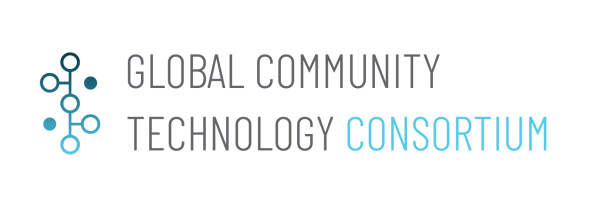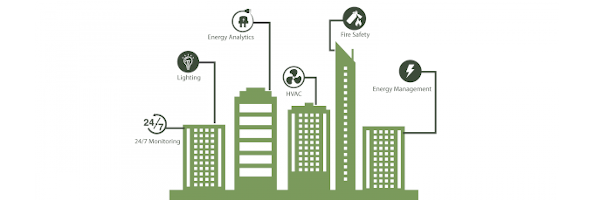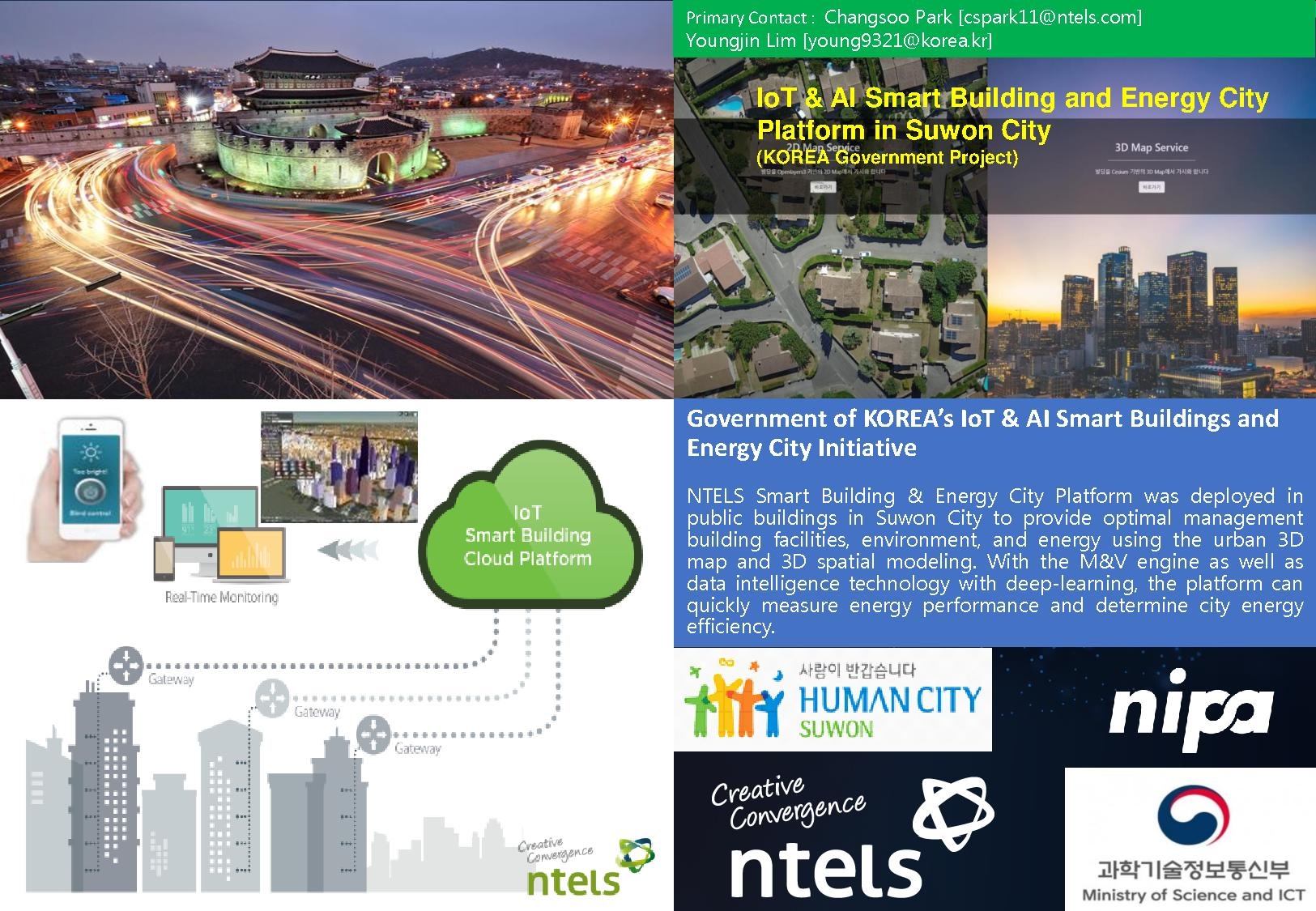IoT and AI based Smart Energy Management System for Smart City
Jump to navigation
Jump to search
| IoT and AI based Smart Energy Management System for Smart City | |
|---|---|

| |
 AI based Smart Energy Management | |
| Team Organizations | NTELS |
| Team Leaders | Changsoo Park |
| Participating Municipalities | Suwon Korea Seoul Korea Busan Korea |
| Status | Ready for Public Announcement |
| Document | 
|
Description
IoT & AI based Smart Energy Management Platform was deployed in public buildings in Suwon City to provide optimal management building facilities, environment, and energy using the urban 3D map and 3D spatial modeling. With the M&V (Measurement & Verification) engine using a standard algorithm, IPMVP (International Performance Measurement and Verification Protocol) as well as data intelligence technology with deep-learning, the platform can quickly measure energy performance and determine energy efficiency.
Challenges
- Interoperability: BAS protocol and IoT Protocol – Develop the hybrid smart gateway and deployed in local building
- Service for over the 100 buildings – Cloud service with 3D urban MAP for 100 Suwon-City’s 100 public buildings
- Data collection/processing and data security
- Process mass data transfer of facility energy data for more than 100 buildings
- Data security with SSL/DTLS/Auth2.0
- Energy saving – Verification of 15% saving of energy
- Verification of energy saving – M&V with IPMVP in cloud
- Tenant service – mobile tenant service (lighting/temperature control and IEQ service)
- Commercial services – Currently, service for 100 Suwon-city public buildings
Solutions
- Gather requirement and training needs from the City of Rohnert park. We are planning to kick off this project by inviting all stakeholders from the city as well few residents and seek their inputs on what are training needs.
- Create scope of workshop/ tutorials and requirements, project plan
- Develop syllabus of the workshop based on the requirement gathering
- Recruit instructors (within SSU) and TA’s (students) for teaching and lab exercises.
- Create tutorials and lab documentations.
Major Requirements
- Field diagnosis
- Facility & Energy Performance Review
- Facility & Energy managing plan
- Deployed hybrid gateway & data IF to Cloud server
- Data analyzing on a cloud / Action
Performance Targets
| Key Performance Indicators (KPIs) | Measurement Methods |
|---|---|
|
|
Standards, Replicability, Scalability, and Sustainability
OneM2M IoT Platform/Open source based IoT Platform
Cybersecurity and Privacy
- Verification on the field for 100 buildings with cyber security (SSL/DTLS/Auth2.0)
- Deployed cyber security on each segment -Device – Gateway – Web – Cloud Server
Impacts
- Energy Saving
- Energy Managing
- Pleasant environment service for tenant with IEQ
- Reduce administrative costs
- Prediction and managing the Energy & Facility failure
Demonstration/Deployment
Current Status of Application to Public Building in Suwon-City